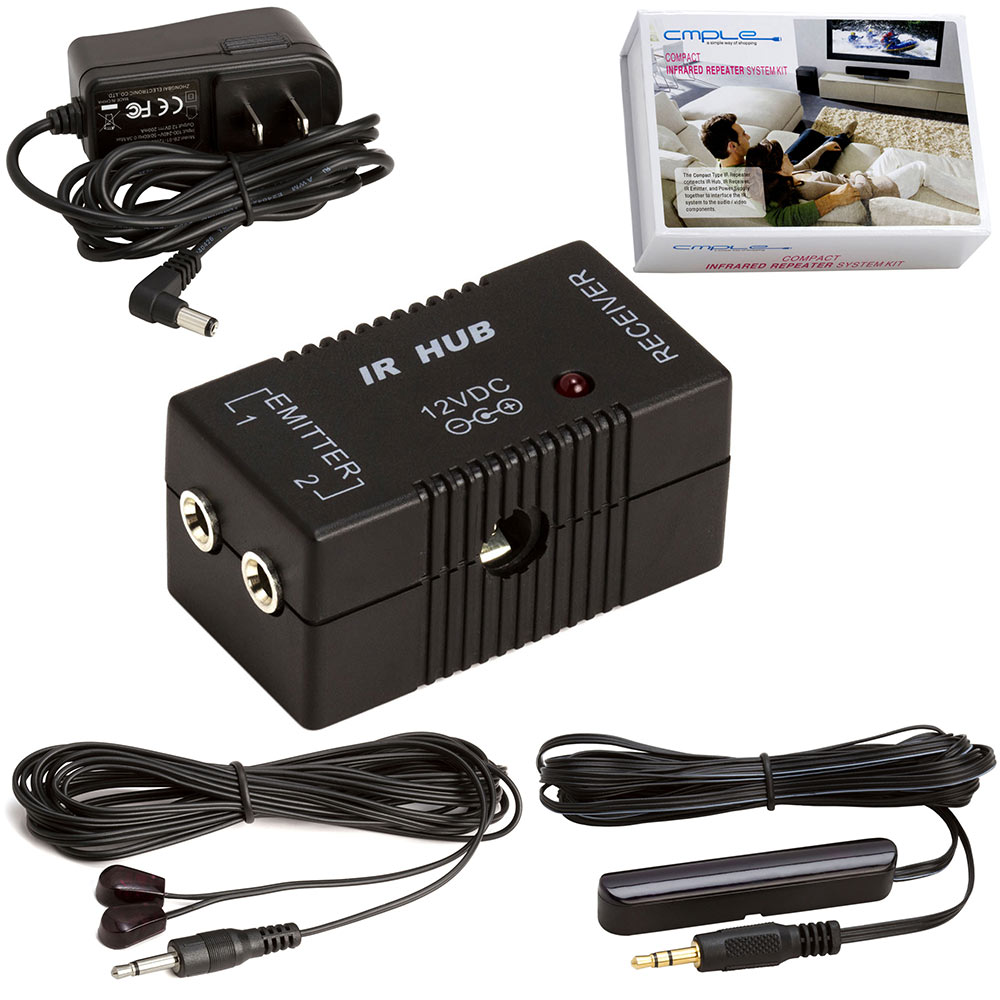IR Repeater Kits
In spite of the fact that we live in an age where smartphones and tablets reign supreme, the truth is that neither of these small devices are yet able to provide the quality and comfort of standard home theater systems. However useful and convenient, home theaters are not exactly small and unless you redecorate an entire room to accommodate them, chances are the bundle of cables connecting the system's multiple electronic components will give you a hard time.
The simplest solution is often the best
If you are looking for a way to keep your home theater's components organized while being able to operate them smoothly, then the simplest one is to place them in a cabinet with wooden doors. Granted, you might argue that this solution is not viable because it doesn't allow you to use your universal remote control, a device that operates mainly on the principle of line of sight. However, thanks to an infrared repeater system, this issue becomes a thing of the past.
What is an IR repeater kit?
As its name suggests, the infrared repeater is a small gadget that replicates the remote controls' commands to the electronic components neatly hidden away in a stylish cabinet. The modus operandi behind this appliance implies that the device transforms the IR light coming from your remote into an electrical signal, which will be later sent via the wiring to all the components of the home theater that can be controlled via IR. The efficiency of the signal transmission is ensured by its main components:
1. The IR receiver
More commonly known as the "target" of an IR repeater system, the receiver has the important roles of capturing the infrared light sent from your remote control and transforming it into an electrical version. It is important to note that quality devices will typically feature an advance filtering option, thus making sure that only the IR signals are converted.
2. The Electrical Distribution System (EDS)
The main function of the distribution system is to ensure the newly converted electrical signal reaches the desired electronic element of the home theater system. In short, this is the circuit that keeps the receiver, emitter and power supply interconnected. On a side note, a quality IR repeater system will allow you to control around 10 emitters simultaneously, while a wiring with cat5 cables will ensure you will experience no trouble installing additional electrical components for your home theater in the future.
3. The Emitter
The emitter has the role of converting the electrical signal it receives into modulated IR light, further transmitting it to the desired electronic device. In case you are worried that the low frequency infrared signals are harmful for the home theater's components, then you should opt for an IR repeater kit that includes fine tuning options.
Don't forget about the power supply!
Irrespective of the capabilities of your new IR repeater system, keep in mind that its overall reliability is directly dependant on connecting the device to the appropriate power supply. The right power supply in this case implies selecting the correct amperage based on the number of emitters and receivers, while making sure you are utilizing the adequate wiring.





